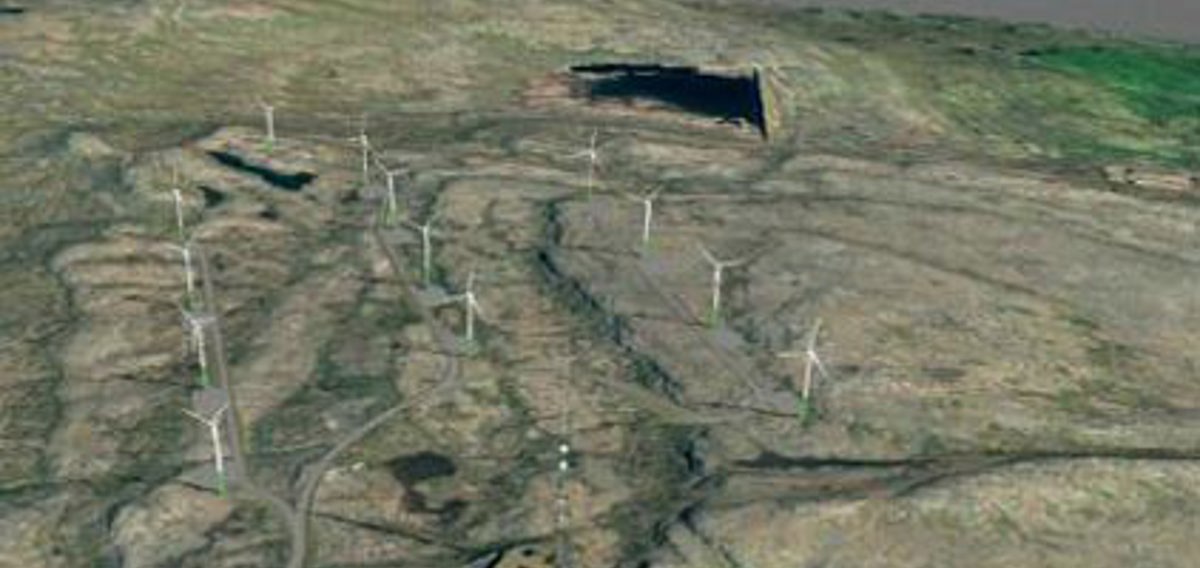Húsahagi – An Important Project

The 13 wind turbines at Húsahaga will considerably increase SEV’s electricity production from sustainable energy sources. When the windfarm becomes fully operational, the combined average annual production from hydropower and wind will be about 60% of the total power production.
In 2006, SEV declared that by 2015, 55% of its electricity production would be from sustainable energy sources and 45% would be from oil. The roll-out of the Húsahaga windfarm puts SEV ahead of schedule.
“We are delighted to announce that with the new windfarm on Húsahaga we will actually exceed our goal. The ratio between green energy and oil by 2015 will be closer to 60-40,” says Hákun Djurhuus, CEO of SEV.
The wind turbines on Húsahaga will have a total production capacity of 11.7 MW, generating annually some 41 GWh. Consequently, windpower production will nearly triple, from 8% to 23% of total annual power production. Today, SEV gets almost 35% of its annual production from hydropower. Coupled with wind at some 23%, the combined power production from sustainable energy sources will be close to 60% of total power production.
The Húsahaga wind turbines are being manufactured by ENERCON and are the same type of wind turbines SEV installed at Neshaga in November 2012.
In 2013, Articon initiated the necessary road work and began to prepare the site for the construction of the windfarm. Articon is also responsible for laying the concrete foundations for the wind turbines. The first wind turbines will arrive in the Faroes in late April, and by the beginning of May the work to install the wind turbines will begin. This work is expected to take around two months. Testing will then be carried out, with the wind turbines gradually coming online in the fall.
Excellent Cooperation
The Faroese Representation Office in Copenhagen was the venue for the signing ceremony between SEV and the German wind turbine company, ENERCON, held on 30 September 2013. The contract governs the production and installation of the 13 wind turbines at Húsahaga. The cost of the wind turbines is about DKK 85 million.
Jákup Súni Lauritsen, Chairman of the SEV Board of Directors, in his speech to celebrate the signing of the contract, noted with pleasure the excellent collaboration with ENERCON.
“Our collaboration with ENERCON began in 2011 when we initiated discussions about supplying wind turbines for Neshaga, a collaboration which proved to be very successful. I believe that today represents a cornerstone in our effort to build out the sustainable energy possibilities in the Faroe Islands,” said Jákup Súni Lauritsen.
“The cooperation with ENERCON is a great step forward, which increases greatly our power production from sustainable energy sources, and thus reduces our reliance on oil. We are on a course toward a greener future, which in the years ahead will enable us to reduce even more our use of oil for electricity production,” confirmed Hákun Djurhuus, CEO of SEV, when the contract was signed.
ENERCON Germany was also quite pleased with the cooperation with SEV.
“We have only had positive experiences in working together with SEV,” says Eike Gentche, Sales Director at ENERCON.
Ongoing Project
The cooperation between SEV and ENERCON also includes the development of a special battery system for the windfarm at Húsahaga, which is a unique project in and of itself. This special battery system will “store” the electricity produced by the wind turbines and release it back into the grid as demand requires, whether for a few milliseconds or even a few minutes. In this way, the new battery system will help ensure a continuous and stable delivery of electricity to the grid from the wind turbines, because wind can be an unstable, fluctuating source of energy. Two years have been allocated to develop the special battery system.
“The development of the battery system is a very exciting part of this project and the top management of ENERCON is following the entire project with great interest,” says Eike Gentche, Sales Director of ENERCON.
A new coupling station, which transfers the electricity produced by the wind turbines to SEV’s 60 kV transmission grid, is also a part of the Húsahaga project. The station will provide for a more stable power supply to the capital, Tórshavn, and to the southern part of Streymoy island. The coupling station will also house the battery system.
The coupling station is designed to blend into the surrounding landscape. Beyond its express technical role, the coupling station will also accommodate lecture halls and exhibition rooms to observe the wind turbines and the production of electricity.
